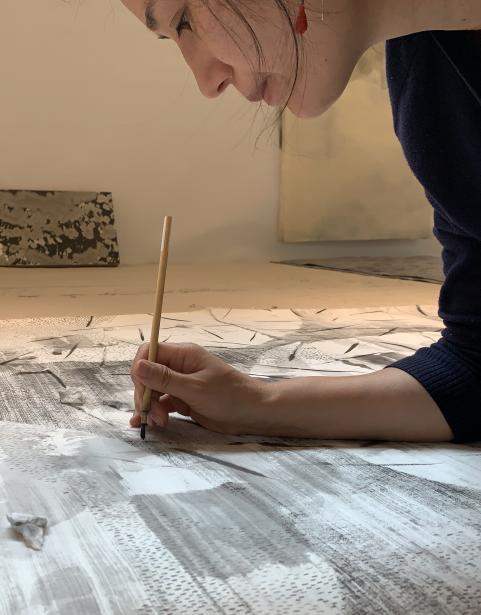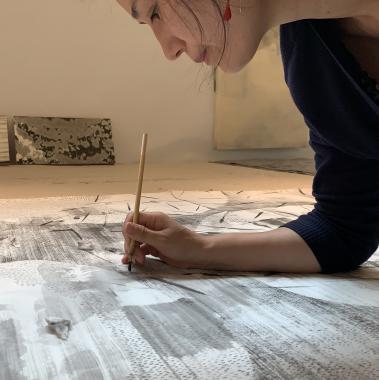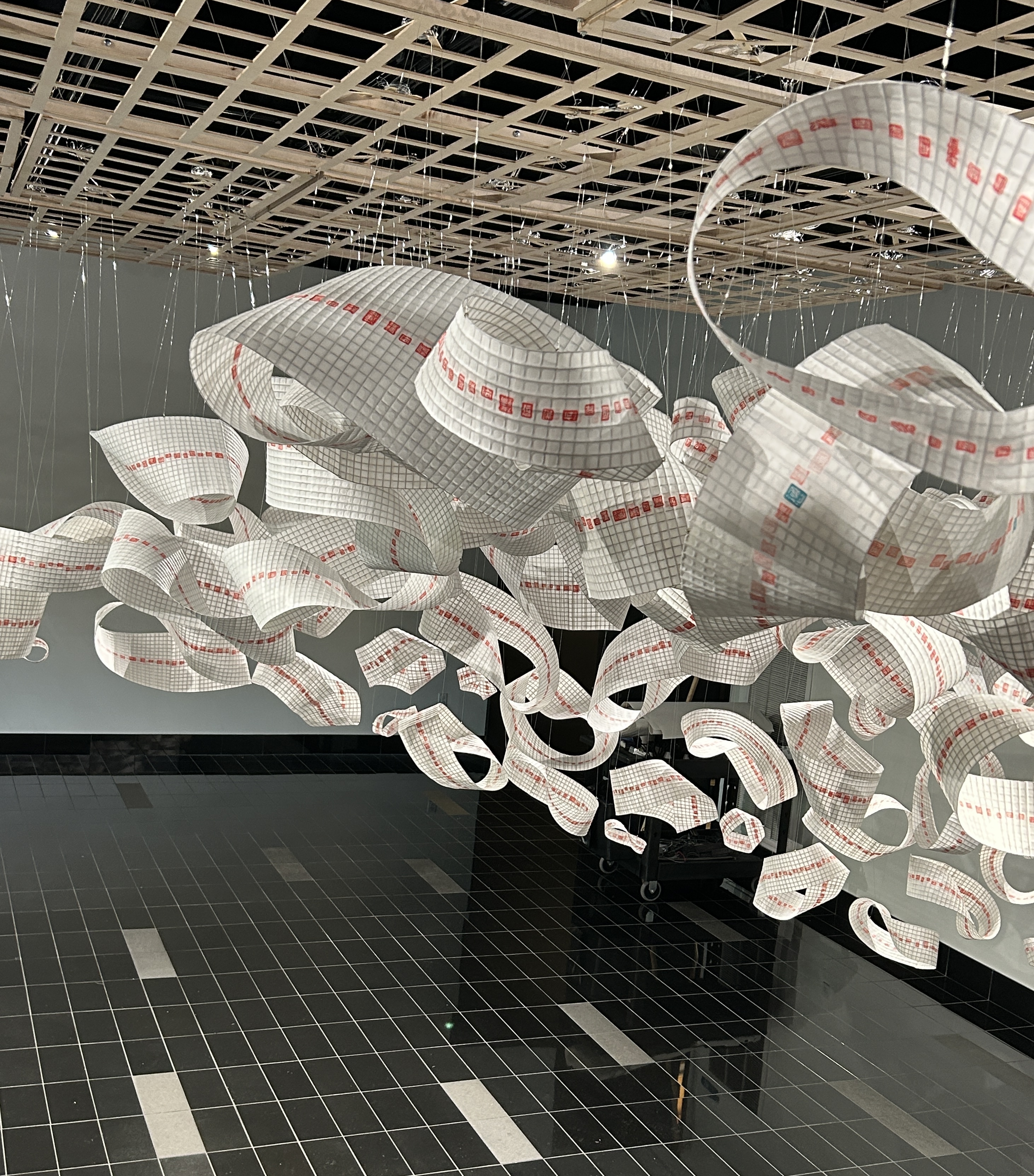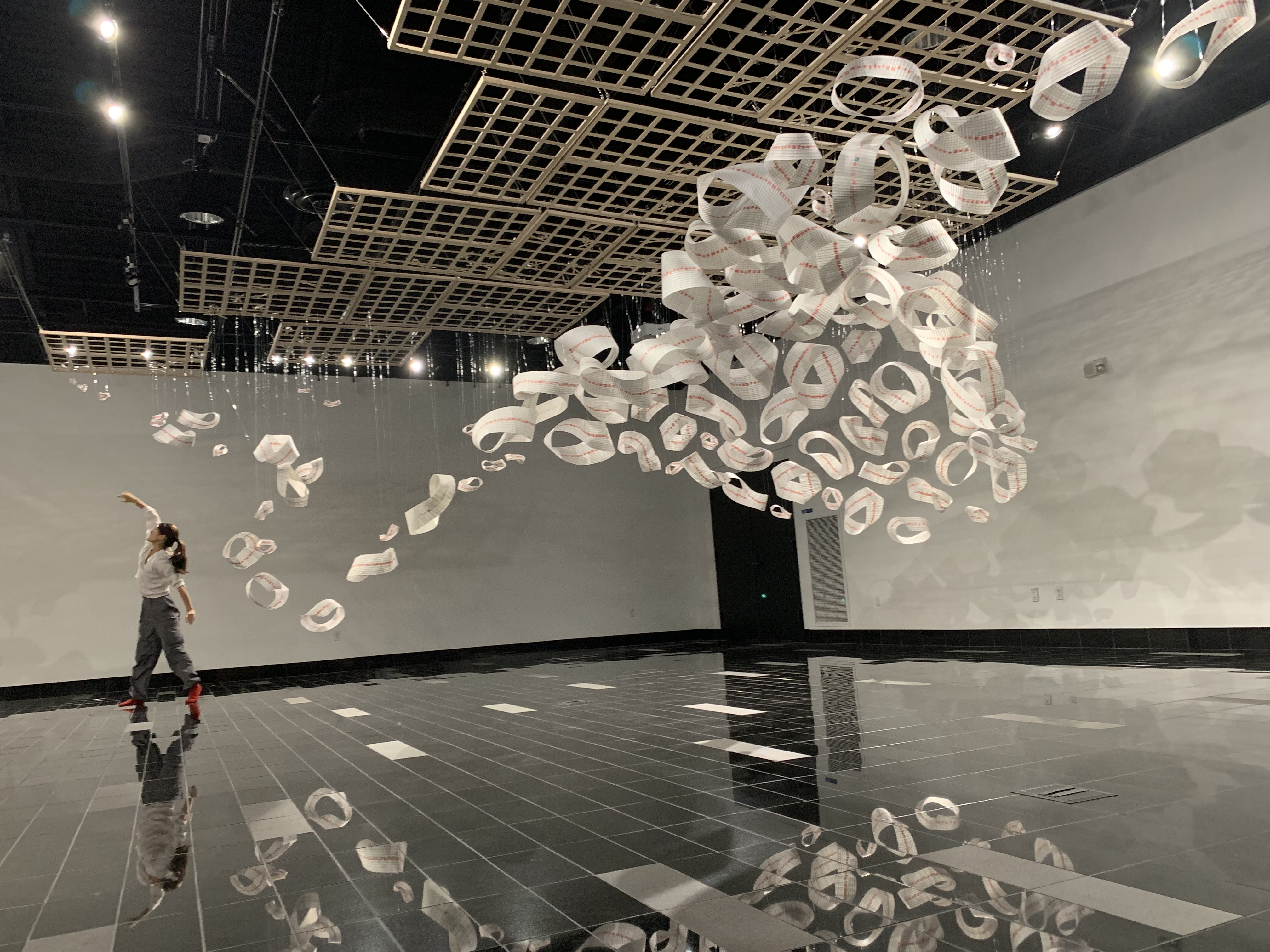Nishiki Sugawara-Beda is a Japanese-American visual artist based in painting and installation, and actively exhibits her work in solo and group exhibitions and offers lectures nationally and internationally. Connecting across space and time, she experiments in ancient Japanese materials and techniques including Sumi ink, Kakejiku landscapes, and rice paper, to merge them with abstract and expressive forms familiar to the modern Western aesthetic.
Exhibition venues include the Spartanburg Art Museum (SC), Morris Graves Museum of Art (CA), Dennos Museum (MI), Amos Eno Gallery (NY), and Cris Worley Fine Arts (TX). Publications include New American Paintings, AEQAI, Athenaeum Review, London Post, Art Spiel, and WhiteHot. Awards including a Seed Grant, Diversity Fellowship, International Enhancement Grant, Idaho Arts Fellowship, Sam Taylor Fellowship, Tusen Takk Foundation residency, and Dallas Museum of Art Otis and Velma Davis Dozier Travel Fund have supported her artistic research. Her works are in private and public collections including the Dallas Museum of Art. Currently, Sugawara-Beda is an Associate Professor of Art at Southern Methodist University.
I was born and raised in Japan, where all schoolchildren learn calligraphy. Calligraphy has become an
entrance point to understanding my own culture as it allows me to recognize the existence of underlying meanings in all forms—language, images, even the mundane interactions of being. This
craft provides the foundation and inspiration for my practice.
Kotodama Converse, a light-weight sculptural installation, has its physical presence in a gallery, but the viewer is the one who completes the work. As the viewer enters and interacts with the installation, they transform themselves to active participants and contribute psychological and emotional contents to the work. In the traditional format of Japanese calligraphy, seals containing characters—the words and phrases—accompany calligraphy work. Because the characters that comprise the seals are being presented without their calligraphic context, the installation provides a blank canvas that serves as an invitation for the viewer to complete the work, bringing their own emotional state, words, and phrases both physically and metaphorically. The act of viewing becomes the act of participation. Furthermore, I hope that they will be encouraged to reflect and reexamine their own boundaries of internal and external selves.
KuroKuroShiro, meaning black-black-white in Japanese, offers spaces where viewers can privately immerse themselves in their own psychological and spiritual world. They are painted with Sumi—an ink traditionally used in East Asia made of soot and animal glue—that offers a wide range of tones and depths in black. With the subtle shifts of blacks, the spiritual and imaginative worlds emerge. The particles in soot—its main ingredient—carry a spirit that can be absorbed by the maker, viewer, or materials. If the viewer is open to the spirit, a space is initiated where the collective spirit freely travels around, bringing colors into viewers’ eyes. While the paintings are not expressing something by themselves, they provoke viewers’ personal agendas and provide a blank space for their spiritual content to fill up. Each work encourages intimate viewing, privately allowing the audience to be vulnerable and feel the subtleness and mystical realm of Sumi to face their inner truth. My ultimate hope is that viewers can walk away from my work with visual and mental frames for their spiritual world to linger, form, and exist.
To speak to the core of humanity, I seek connections among cultures both from the past and present and ground myself with the origins of various matters from my native and adopted cultures through my research. My recent works attempt to highlight an oft-forgotten engagement in contemporary society—a deeper connection with one’s own spirit. While Kotodama Converse and the paintings present a moment of this spiritual engagement, I hope viewers enjoy traveling through their own inner landscapes.




